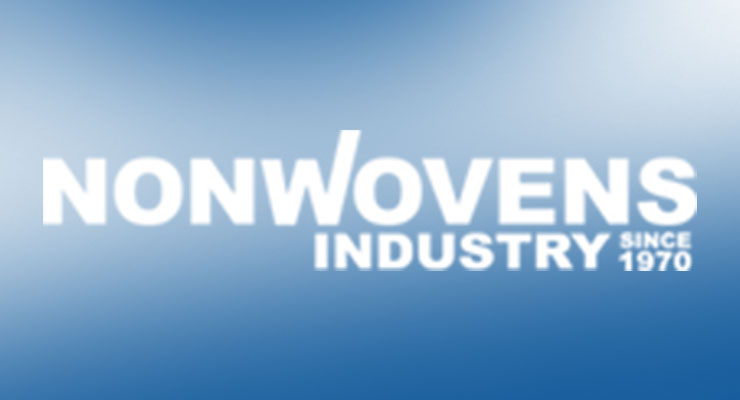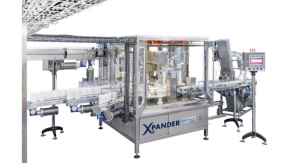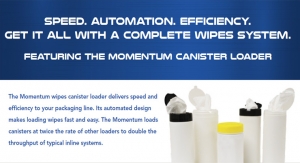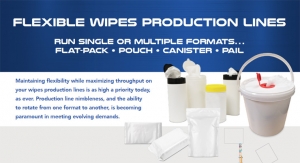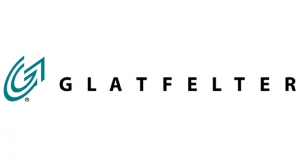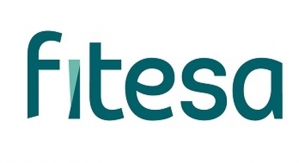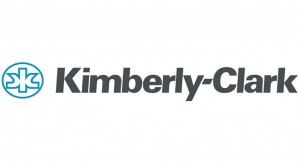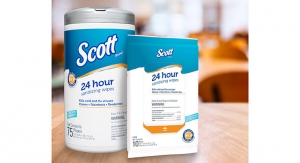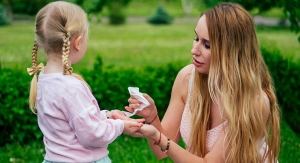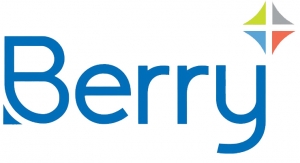Dave Rousse, INDA, president09.14.15
Flushable wipes increasingly are being sought by consumers for their convenience and effectiveness – yet blamed for wastewater woes. What’s the real problem and how can the nonwovens industry work together with the wastewater sector and others to find solutions? Let’s begin by looking at common misconceptions about flushability in wipes.
Myth #1 - ONLY wipes are to blame.
Reality: Consumers are flushing many items that were never designed or marketed to be flushed.
Forensic studies done in collaboration with wastewater representatives show approximately 90% of the items being found on

Materials outside of flushable wipes are the main contributors to clogs, studies have shown.
wastewater screens are not engineered nor marketed to be flushed: paper towels, napkins, baby wipes, feminine hygiene products and wipes for cleaning and disinfecting. The real issue is that consumers are flushing too many items that were never designed or marketed to be flushed.
The biggest culprit is paper towels, which consistently made up the largest portion of the debris, accounting for almost 50%. This was followed by baby wipes (meant to be rolled up in a diaper and thrown in the trash), then feminine hygiene products and then household and personal care wipes.
Items that could be identified as flushable wipes accounted for only 8% of the debris collected in screens, and even that is primarily due to the accumulation effect taking place once a blockage has started. Even pieces of toilet paper can be found in that blockage.
Flushing items not designed to be flushed is not a problem that can be solved by focusing on only one product, industry or company.
We’re confident collaboration and education will lead to a solution, and we remain dedicated to meeting that goal.
Myth #2 – Flushable wipes shouldn’t be flushed.
Reality: Wipes that are engineered to be flushed and pass the INDA/EDANA assessment tests can be safely flushed into properly designed, maintained and operated municipal sewer systems and septic systems.
In the wipes category, 93% of wipes sold are not designed to be flushed, not marketed to be flushed and contain disposal instructions to not flush. These non-flushables include baby wipes, hard-surface cleaning wipes, anti-bacterial wipes, facial wipes and many other kinds of wipes.
But the 7% of wipes that have been specifically designed to not harm wastewater systems and are marketed as being a flushable supplement to toilet paper can indeed be safely flushed and not cause harm.
These highly engineered items are made largely of natural cellulosic fibers that are much shorter in length than fibers in other wipes. The short-fiber wipes hold together to get their job done and then lose their integrity when flushed and conveyed through the wastewater system, becoming totally unrecognizable from toilet paper debris in their final state.
Flushable wipes also undergo a rigorous Flushability Assessment Testing process with seven tests to ensure safe transit and full disintegration in wastewater systems in order to receive the industry’s “flushable” designation (see INDA.org/flushability).
These tests are developed by industry experts who have the extensive R&D resources, experience and technical ability necessary to effectively address the issue. INDA is currently drafting the fourth edition assessment tests in an effort led by a committee that includes wastewater representatives from the leading associations of the wastewater sector (WEF, NACWA, APWA, CWWA). The target publication date for the revised testing assessments is June 2016.
Myth #3 – The Industry isn’t doing anything about it.
Reality: INDA is collaborating with manufacturers, the wastewater sector, retailers and communities to build awareness about safe disposal practices. INDA and its members are leading the charge on addressing this issue. And we’ll soon be reaching out to other industry groups representing non-wipes products in the 90% of the debris causing the problems.
INDA’s dialogue with the wastewater sector began in 2003 and stepped up in 2012 with the major wastewater associations to focus the public’s attention on properly disposing of, or not flushing, the 90-plus percent of items that are really causing the clogs in wastewater systems.
Together, we are also working to further strengthen the Flushability Assessment Testing that products must pass in order to qualify as “flushable” and be marketed as such. INDA and wastewater have come a long way in educating each other and working toward a solution.
Myth #4 – Consumers don’t follow instructions.

INDA is encouraging wipes makers to properly label wipes so consumers know what should be flushed and what should not.
Reality: Public education and well-designed consumer packaging can be highly effective in reducing the burden of non-flushables.
Educating consumers about the proper disposal of flushable and non-flushable products does reduce the burden for wastewater. In Portland, ME, the numbers of baby wipes flushed dropped substantially immediately following INDA’s joint education campaign with municipal wastewater interests, research shows.
Consumers also recognize and understand the “Do Not Flush” symbol on product packaging. According to research, 94% of consumers know instantly what this symbol means. INDA and its members also have worked with brand owners to increase the visibility of this symbol on packaging. Consumers want to do the right thing and, given the right information, we believe they will.
Myth #5 – Regulations and standards are the answer.
Reality: The industry is in the best position to improve its products and respond with speed and agility.
Bills such as the one in Maine, defeated earlier this year, focus on the wrong target and are misguided. New York, New Jersey, California, Washington state and Canada are among jurisdictions also considering legislation. We believe education, not legislation, is the better solution.
Denying consumers the flushable category altogether would make the problem worse: consumers will replace flush-friendly products with others NOT engineered to be flushed. Flushable wipes meet real hygienic needs for consumers—they deserve choices and the right to make informed decisions about product purchases.
Finding a Common Solution
This issue can be solved by many groups working together: INDA, consumers, manufacturers, brand owners, wastewater entities and communities. In our industry, we need to work to establish compliance by all brand owners of wipes of every kind to abide by our Code of Practice. We would also like those involved with paper towels and feminine hygiene products to use the “Do Not Flush” symbol as well. In addition, the progress and collaboration with wastewater associations and other groups must continue. And lastly, continued education and public outreach initiatives are needed to raise awareness about safe disposal of products used in a bathroom and spread the message that the toilet is not a trash can.
Myth #1 - ONLY wipes are to blame.
Reality: Consumers are flushing many items that were never designed or marketed to be flushed.
Forensic studies done in collaboration with wastewater representatives show approximately 90% of the items being found on
Materials outside of flushable wipes are the main contributors to clogs, studies have shown.
The biggest culprit is paper towels, which consistently made up the largest portion of the debris, accounting for almost 50%. This was followed by baby wipes (meant to be rolled up in a diaper and thrown in the trash), then feminine hygiene products and then household and personal care wipes.
Items that could be identified as flushable wipes accounted for only 8% of the debris collected in screens, and even that is primarily due to the accumulation effect taking place once a blockage has started. Even pieces of toilet paper can be found in that blockage.
Flushing items not designed to be flushed is not a problem that can be solved by focusing on only one product, industry or company.
We’re confident collaboration and education will lead to a solution, and we remain dedicated to meeting that goal.
Myth #2 – Flushable wipes shouldn’t be flushed.
Reality: Wipes that are engineered to be flushed and pass the INDA/EDANA assessment tests can be safely flushed into properly designed, maintained and operated municipal sewer systems and septic systems.
In the wipes category, 93% of wipes sold are not designed to be flushed, not marketed to be flushed and contain disposal instructions to not flush. These non-flushables include baby wipes, hard-surface cleaning wipes, anti-bacterial wipes, facial wipes and many other kinds of wipes.
But the 7% of wipes that have been specifically designed to not harm wastewater systems and are marketed as being a flushable supplement to toilet paper can indeed be safely flushed and not cause harm.
These highly engineered items are made largely of natural cellulosic fibers that are much shorter in length than fibers in other wipes. The short-fiber wipes hold together to get their job done and then lose their integrity when flushed and conveyed through the wastewater system, becoming totally unrecognizable from toilet paper debris in their final state.
Flushable wipes also undergo a rigorous Flushability Assessment Testing process with seven tests to ensure safe transit and full disintegration in wastewater systems in order to receive the industry’s “flushable” designation (see INDA.org/flushability).
These tests are developed by industry experts who have the extensive R&D resources, experience and technical ability necessary to effectively address the issue. INDA is currently drafting the fourth edition assessment tests in an effort led by a committee that includes wastewater representatives from the leading associations of the wastewater sector (WEF, NACWA, APWA, CWWA). The target publication date for the revised testing assessments is June 2016.
Myth #3 – The Industry isn’t doing anything about it.
Reality: INDA is collaborating with manufacturers, the wastewater sector, retailers and communities to build awareness about safe disposal practices. INDA and its members are leading the charge on addressing this issue. And we’ll soon be reaching out to other industry groups representing non-wipes products in the 90% of the debris causing the problems.
INDA’s dialogue with the wastewater sector began in 2003 and stepped up in 2012 with the major wastewater associations to focus the public’s attention on properly disposing of, or not flushing, the 90-plus percent of items that are really causing the clogs in wastewater systems.
Together, we are also working to further strengthen the Flushability Assessment Testing that products must pass in order to qualify as “flushable” and be marketed as such. INDA and wastewater have come a long way in educating each other and working toward a solution.
Myth #4 – Consumers don’t follow instructions.
INDA is encouraging wipes makers to properly label wipes so consumers know what should be flushed and what should not.
Educating consumers about the proper disposal of flushable and non-flushable products does reduce the burden for wastewater. In Portland, ME, the numbers of baby wipes flushed dropped substantially immediately following INDA’s joint education campaign with municipal wastewater interests, research shows.
Consumers also recognize and understand the “Do Not Flush” symbol on product packaging. According to research, 94% of consumers know instantly what this symbol means. INDA and its members also have worked with brand owners to increase the visibility of this symbol on packaging. Consumers want to do the right thing and, given the right information, we believe they will.
Myth #5 – Regulations and standards are the answer.
Reality: The industry is in the best position to improve its products and respond with speed and agility.
Bills such as the one in Maine, defeated earlier this year, focus on the wrong target and are misguided. New York, New Jersey, California, Washington state and Canada are among jurisdictions also considering legislation. We believe education, not legislation, is the better solution.
Denying consumers the flushable category altogether would make the problem worse: consumers will replace flush-friendly products with others NOT engineered to be flushed. Flushable wipes meet real hygienic needs for consumers—they deserve choices and the right to make informed decisions about product purchases.
Finding a Common Solution
This issue can be solved by many groups working together: INDA, consumers, manufacturers, brand owners, wastewater entities and communities. In our industry, we need to work to establish compliance by all brand owners of wipes of every kind to abide by our Code of Practice. We would also like those involved with paper towels and feminine hygiene products to use the “Do Not Flush” symbol as well. In addition, the progress and collaboration with wastewater associations and other groups must continue. And lastly, continued education and public outreach initiatives are needed to raise awareness about safe disposal of products used in a bathroom and spread the message that the toilet is not a trash can.

